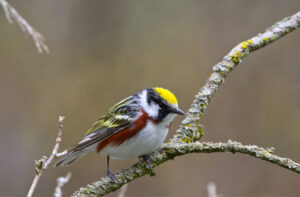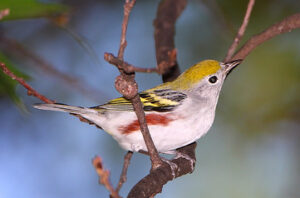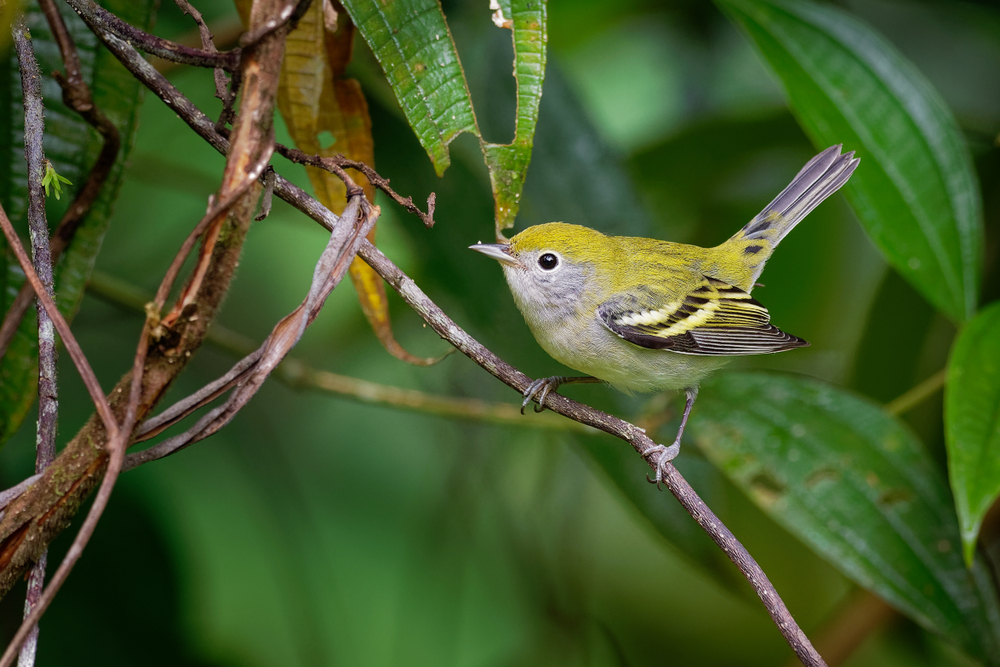Chestnut-sided Warbler, Setophaga pensylvanica
Bill Rowe
The Midwest is rich in warblers: besides the ones that nest here, there are many more that occur only on migration, spring and fall, as they pass through en route to their breeding grounds farther north and then to their wintering range south of the border. One of the commonest, seen in good numbers every year by active birders, is the Chestnut-sided Warbler—and how remarkable, then, that two hundred years ago it was a rarity! Admittedly, the sources of information are limited, but we do have detailed accounts from pioneering naturalists of those days like Alexander Wilson, John James Audubon, and Thomas Nuttall; apparently they all found the Chestnut-sided to be one of the rarest warblers, in fact seen only once by Audubon. The most likely explanation is that the Chestnut-sided’s preferred habitat of early-successional tree growth was itself rare in those days, when much of the East was covered with mature forest. The lumbering that occurred on a vast scale in the later nineteenth and early twentieth centuries opened up enormous areas of land to the re-growth of shrubs, thickets, and young trees, and must have allowed Chestnut-sided Warblers to increase exponentially. Now they join up with other migrant warblers, plus flycatchers, vireos, tanagers, and the local chickadees and titmice, to form roving flocks in the woods as they pass through—more quietly in fall, no longer singing as they do in spring. For another interesting feature of this little bird, its change of appearance from spring to fall, please read on.
IDENTIFICATION: Some warblers change very little with age, gender, or season, while others, like the Chestnut-sided, may vary with all three. The adult male in spring (see below left) has a bold yellow crown and chestnut stripes on the sides, and females are similar though a bit less striking. By fall, however, those same adults have molted into a nonbreeding plumage that is rather different, and similar to that of the immature birds that are migrating for the first time: they have a lime-green crown and back, a silver-gray face and underparts (shading to white), a white eyering, and pale yellow wingbars. This combination is handsome and distinctive in its own right, and not confusable with any other warbler; see the banner photo above, chosen because this is the season for it. Note that the bird shows no sign of any chestnut on the sides; it’s probably an immature female. Most adults in fall, and some immature males, will show a bit of chestnut as an added feature along with the new green-and-gray colors (see below right).
ST. LOUIS STATUS: Common and expectable in any wooded or brushy area (including town parks and yards) along with other migrants, late April to late May and again late August to early October.
Learn more and listen to the songs and calls of Chestnut-sided Warblers here.


Male in breeding plumage
Adult or young male in fall
Photo Credit: Al Smith




